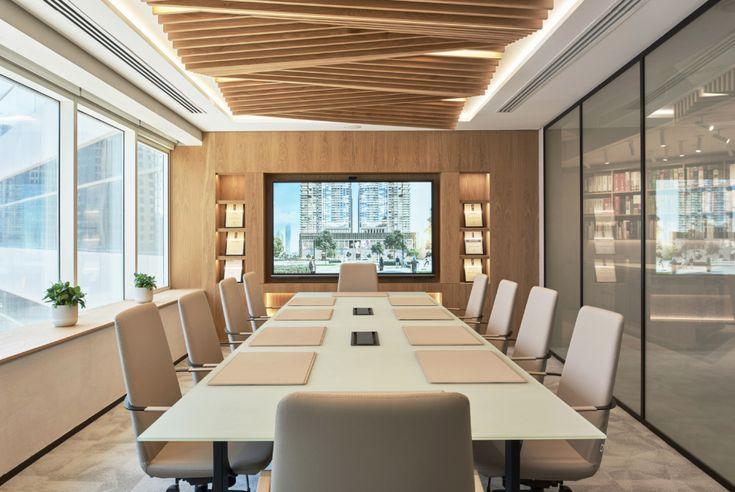Modern Office Interior Design Services: Blending Functionality with Style

The modern office has evolved far beyond being a simple place to work. It’s now a dynamic environment where creativity, collaboration, and productivity converge. The way an office looks and feels has a direct impact on how people perform and how a company is perceived.
Today’s modern Office Interior Design Services blends functionality with style, creating spaces that are not only visually appealing but also adaptable, efficient, and supportive of employee well-being.
The Shift Toward Human-Centered Design
In the past, office design was primarily about maximizing space efficiency—rows of identical desks, harsh lighting, and minimal personalization. The modern era, however, embraces a human-centered design philosophy that prioritizes comfort, wellness, and flexibility.
Companies now recognize that employees are their most valuable assets. As such, the focus has shifted toward creating workspaces that enhance mood, promote engagement, and reduce stress. Ergonomics, biophilic design, and inclusive layouts have become central to this transformation.
For instance, adjustable desks, supportive chairs, and properly designed lighting reduce fatigue and discomfort. Incorporating plants, natural light, and organic materials helps connect people with nature—an approach known as biophilic design—which has been proven to improve mental clarity and productivity.
Open Spaces and Flexible Layouts
Open-plan offices have become the hallmark of Office Interior Design Services. These layouts encourage collaboration and communication by eliminating barriers such as cubicles and walls. However, today’s designers are refining the open-office concept to strike a better balance between openness and privacy.
The latest trend involves flexible zones, dedicated spaces for different modes of work. For example, open collaboration areas are paired with private pods or quiet rooms for deep focus. Lounge areas, standing desks, and creative corners allow employees to choose environments that suit their task or mood.
This flexibility also reflects the rise of hybrid work models. As more employees split time between home and office, workplaces must be adaptable. Modular furniture, movable partitions, and multipurpose meeting rooms ensure that the office can evolve with changing needs.
The Role of Technology in Modern Design
Modern office design seamlessly integrates technology into the physical environment. Smart systems control lighting, temperature, and security to enhance comfort and efficiency. Wireless charging stations, built-in power outlets, and video conferencing tools ensure connectivity without clutter.
Technology also plays a vital role in fostering collaboration among hybrid teams. Interactive whiteboards, virtual meeting pods, and soundproof video booths are common features in contemporary offices.
Moreover, data-driven design is gaining traction. Companies now use space analytics—such as occupancy sensors and user feedback—to understand how employees interact with their environment. This data informs design decisions, helping to optimize space utilization and improve the overall experience.
Aesthetic Trends: Minimalism with Warmth
Modern office interiors are defined by clean lines, simplicity, and natural materials. However, unlike the cold minimalism of earlier decades, today’s minimalist offices exude warmth and personality.
Neutral palettes—whites, greys, beiges—are often combined with earthy tones, wood accents, and pops of color to create a balanced aesthetic. Textured finishes, soft fabrics, and layered lighting contribute to a welcoming and sophisticated atmosphere.
The emphasis is on creating a sense of calm and clarity, reducing visual clutter so employees can focus better. This approach reflects the growing awareness of mental wellness in the workplace. A clean, organized environment supports a clear mind and fosters productivity.
Brand Identity Through Design
Office design is also a powerful tool for expressing brand identity. Every element—from the color scheme to the furniture—can communicate a company’s culture and values.
Tech startups often favor bold, playful designs with bright colors, murals, and unconventional furniture, reflecting innovation and agility. Corporate offices, on the other hand, may opt for elegant, professional aesthetics that convey stability and sophistication.
By aligning design with brand identity, companies create environments that resonate with both employees and visitors. It builds a sense of belonging and pride among staff while reinforcing brand perception to clients and partners.
Sustainability and Eco-Friendly Design
Sustainability has become a non-negotiable element of modern office design. Businesses are increasingly aware of their environmental footprint and are integrating eco-friendly materials, energy-efficient systems, and waste reduction strategies.
Reclaimed wood, recycled metal, and low-VOC (volatile organic compound) paints are commonly used to reduce environmental impact. LED lighting and smart thermostats improve energy efficiency. Many offices also incorporate green walls or rooftop gardens, which not only purify the air but also serve as visually inspiring focal points.
Sustainable design extends beyond materials—it’s about creating long-lasting spaces that can adapt over time. Modular furniture and reconfigurable layouts reduce waste by allowing the office to evolve without complete renovations.
Wellness-Oriented Features
The modern workplace is increasingly seen as a holistic ecosystem that nurtures both physical and mental health. Wellness design includes features such as ergonomic furniture, air-purification systems, and acoustic treatments that minimize noise distractions.
Lighting design plays a particularly crucial role. Access to natural light is now considered a fundamental part of healthy office design. In areas where daylight is limited, designers use circadian lighting systems that mimic natural light cycles to support energy levels and well-being.
Amenities such as relaxation zones, meditation rooms, and on-site fitness areas are also becoming common. These spaces encourage employees to recharge, fostering a healthier work-life balance and improving overall job satisfaction.
The Rise of Collaborative and Social Spaces
Collaboration has always been central to organizational success, and design plays a major role in enabling it. Modern offices feature social hubs, such as coffee bars, communal kitchens, and casual seating areas, where spontaneous conversations and creative ideas can flourish.
These spaces break down hierarchical barriers and foster a sense of community. By blurring the line between work and leisure, they make the office feel more like a shared experience than a rigid environment.
Balancing Privacy and Interaction
One of the biggest challenges in Office Interior Design Services is balancing open collaboration with the need for privacy. Too much openness can lead to distractions, while excessive isolation can stifle communication.
Designers are addressing this through acoustic zoning, visual partitions, and hybrid spaces that offer varying degrees of enclosure. Phone booths, quiet pods, and “focus zones” allow employees to retreat when needed, while open lounges and team tables promote connection.
This activity-based design approach ensures that every task—whether brainstorming, deep thinking, or socializing—has an ideal setting.
Looking Ahead: The Future of Office Design
As technology, culture, and work habits continue to evolve, so will office design. The workplace of the future will likely be even more adaptive, immersive, and human-centered.
Expect to see advances like augmented reality workspaces, AI-driven climate and lighting controls, and sustainable materials made from bio-based innovations. Offices will continue to merge physical and digital environments, supporting flexibility and inclusion for global teams.
Above all, the guiding principle will remain the same: the best office designs are those that balance functionality, style, and human experience.
Conclusion
Modern Office Interior Design Services is more than a matter of aesthetics, it’s a strategic investment in people and performance. By blending functionality with style, today’s workplaces inspire creativity, foster collaboration, and support well-being.
From sustainable materials and flexible layouts to technology integration and wellness-oriented features, every design choice contributes to a more engaging and productive work environment. As the line between work and life continues to blur, modern offices are becoming not just places to work, but places to thrive.








